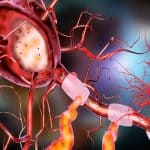Spanish scientists produced the first human-monkey chimeras in China to bypass ethical guardrails, igniting yet another ethical debate. Chimeras could effectively address the global shortage of organs, as well as organ rejection but raise many moral concerns. Advancements in this field could save lives yet they are highly controversial.
A chimera is an organism with genetic material from more than one source. Recently, a report claiming a team of researchers led by Prof Juan Carlos Izpisúa Belmonte have produced human-monkey chimeras was published in the Spanish newspaper El País. Izpisúa Belmonte works for the Salk Institute in the US, but the research was conducted in China to bypass otherwise strict regulation.
Scientists have already produced both pig embryos and sheep embryos which contain human cells. Still, the technology is far from effective. In the case of human-sheep chimeras, researchers estimate that only one cell in 10,000 was human. Alejandro De Los Angeles, from the department of psychiatry at Yale University, believes human-monkey chimeras were being developed to explore ways of increasing the percentage of human cells.
Pigs and sheep have organs similar in size as humans do. Organs genetically matched to a particular human recipient could one day be grown inside them. In theory, cells taken from an adult human get reprogrammed into stem cells. They are then introduced into the embryo of another species to produce chimeras.
“Making human-monkey chimeras could teach us how to make human-pig chimeras with the hope of making organs for transplantation,” he said for The Guardian. “It could teach us which types of stem cells we should be using, or other ways of enhancing what’s called ‘human chimerism levels’ inside pigs.”
The human-monkey chimeras have reportedly only been allowed to develop for a few weeks, long before functional organs can form. Prof Robin Lovell-Badge, a developmental biologist from London’s Francis Crick Institute, said that chimeras at laboratories are balls of cells. If chimeras were allowed to develop further it could raise concerns, he added.
“How do you restrict the contribution of the human cells just to the organ that you want to make?” he said. “If that is a pancreas or a heart or something, or kidney, then that is fine if you manage to do that. [But] if you allow these animals to go all the way through and be born, if you have a big contribution to the central nervous system from the human cells, then that obviously becomes a concern.”
In 2019, Japanese researchers such as Prof Hiromitsu Nakauchi received government support to create human-mouse chimeras. Japan lifted a ban on allowing such embryos to develop beyond 14 days and being implanted into a uterus. Nakauchi has said that ethical and technical hurdles need to be overcome first before chimeras can be brought to term. Researchers agree the animals might not behave like “normal” rodents but will also hardly ever take on human-like behavior.
“So there are some animal welfare issues as well as the ‘yuck-factor’ ethical issues from making something more human,” said Lovell-Badge. “Clearly if any animal born had aspects of human appearance, their faces, their hands, their skin, then I suspect, while scientifically very interesting, people might get a little upset with that.”
In theory, human-monkey chimeras provide new ways to study neurological and psychiatric diseases in humans. According to De Los Angeles, in the case of Alzheimer’s more than 150 trials have failed in 20 years, and it could be because of a lack of a good disease model. One proposed approach for brain research is genetically altering a monkey embryo and injecting it with human stem cells. One part of the brain would be composed only of human cells.
“If you just swap the hippocampus, it doesn’t mean you are now going to have a human-functioning brain,” said Lovell-Badge. “It might have perhaps slightly better memories or slightly different memories … but they are not going to have a human cortex, which is what actually makes us human.”
Such proposals raise red flags, and ethical questions start to pile. How much human-like could these creatures become? De Los Angeles claims there is still a long way to go before human-monkey chimeras are brought to term. Also, researchers have previously indicated being able to prevent human cells from ending up in chimeras’ brains or sex organs.
“The evolutionary distance between humans and monkeys spans 30-40 million years, so it is unclear if this is even possible,” said De Los Angeles. “This difference is greater than 10 million years between mice and rats, and even the efficiency of making mouse-rat chimeras is already quite low.”
Making monkey brains more human is unacceptable for many, but the truth is, it has already happened with the help of a different technique. This spring, scientists in China published a study in which they claimed to have introduced a human brain gene into monkeys. The animals demonstrated better short-term memory and shorter reaction times. So is it possible that the development of human-monkey chimeras to study the central nervous system could gain approval? The big question is, where will humanity draw the line?
“In the UK, any proposal to make human-monkey chimeras would have to be very well justified, and it would have to get through a very tough review process,” said Lovell-Badge. “I am sure that any proposal to go straight to live-born chimeras would not get approval in the UK and probably not also in Japan.”
Learn more about other artificially produced chimeras in the video below:
By Andreja Gregoric, MSc



